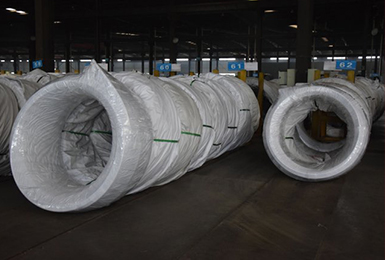דצמ . 10, 2024 10:27 Back to list
fine iron powder
Fine Iron Powder Applications and Properties
Fine iron powder, a versatile material with a broad range of applications, is produced through various methods including atomization, grinding, and reduction processes. Its small particle size and high surface area lend it unique characteristics that make it suitable for a variety of industries, from metallurgy to electronics and beyond. This article delves into the properties, production methods, and applications of fine iron powder, highlighting its significance in modern technology.
Properties of Fine Iron Powder
The properties of fine iron powder can vary significantly based on the production method and the conditions under which it is processed. Generally, the average particle size of fine iron powder ranges from a few microns to several hundred microns. These small particles have a high density and excellent flowability, making them ideal for various manufacturing processes. Furthermore, fine iron powder has a high surface area-to-volume ratio, which enhances its reactivity and makes it suitable for applications requiring fast reactions.
One of the standout characteristics of fine iron powder is its magnetic properties. When subjected to a magnetic field, fine iron powder can easily become magnetized, allowing it to be used in magnetic materials and components. Additionally, the powder can exhibit varying levels of oxidation depending on the environment, which can further influence its performance in specific applications.
Production Methods
Fine iron powder can be produced through several methods, each tailored to achieve specific characteristics
. Among the most common production methods are1. Atomization This involves the rapid solidification of molten iron by directing a stream of high-pressure gas or liquid onto it. The droplets formed subsequently freeze into fine powder particles. Atomization is known for producing high-quality powder with uniform particle size distribution.
2. Mechanical Milling In this method, bulk iron is mechanically ground down into fine particles using ball mills or other milling equipment. While this is a more traditional method of producing fine powders, it can lead to a wider range of particle sizes and shapes.
3. Reduction Processes In cases where iron oxides are present, reduction can be applied to convert them into pure iron powder. This method often involves chemical reactions in controlled environments to produce fine particles with specific characteristics tailored for further applications.
fine iron powder

Each method has its advantages and disadvantages, influencing the final properties of the iron powder. Manufacturers must choose the appropriate method based on the desired applications and material requirements.
Applications of Fine Iron Powder
Fine iron powder finds diverse applications across various industries
1. Metallurgy In the metallurgy sector, it is used to produce sintered components, providing high density and mechanical strength. The powder can be compacted and sintered to create parts with complex geometries, which are essential in automotive and aerospace applications.
2. Electromagnetic Components Due to its magnetic properties, fine iron powder is used in the manufacturing of inductors, transformers, and magnetic cores. These applications benefit from the powder's ability to enhance magnetic permeability and reduce energy losses.
3. Additive Manufacturing With the rise of 3D printing technologies, fine iron powder is being utilized as a feedstock material for additive manufacturing processes, enabling the production of intricate designs and complex parts that are increasingly demanded in various industries.
4. Chemical Applications Fine iron powder is also utilized as a catalyst in various chemical reactions. Its high surface area allows for increased interaction between reactants, enhancing reaction rates and overall efficiency.
5. Paints and Coatings The powder is incorporated into paints and coatings to enhance corrosion resistance and provide magnetic properties to specific applications, thus improving performance and longevity.
Conclusion
Fine iron powder is a crucial material that plays a significant role in numerous industries due to its unique properties and versatility. From enhancing electromagnetic components to enabling advanced manufacturing techniques, fine iron powder's applications continue to expand as technology evolves. Understanding its production methods and properties allows manufacturers and researchers to harness its potential effectively, significantly impacting modern engineering and industrial processes. As industries continue to innovate, fine iron powder will undoubtedly remain a key material driving progress in a myriad of applications.
-
Tundish Dry Vibrator: Boost Steel Casting Performance
NewsAug.23,2025
-
Thermal Insulation Cups Materials Exporters - Quality & Durable Supplies
NewsAug.22,2025
-
High-Purity Graphitized Petroleum Coke & Low Nitrogen Recarburiser
NewsAug.21,2025
-
High-Performance Fe-C Composite Pellets for BOF
NewsAug.19,2025
-
Tundish Dry Vibrator: Enhance Refractory Life & Casting Efficiency
NewsAug.18,2025
-
Building Material for Round Wall Exporters: Quality & Durable
NewsAug.17,2025
